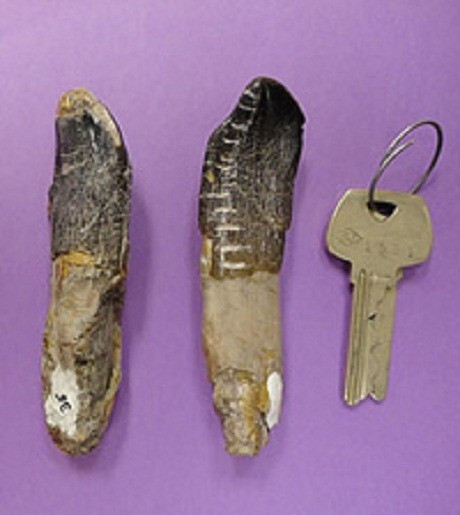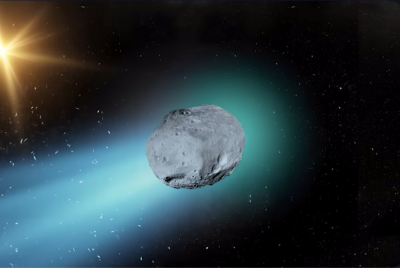Dinosaur Teeth Indicates Camarasaurus Had Seasonal Migration

The results of a study published in the journal Nature shows that giant sauropod dinosaurs such as Camarasaurus had seasonal migratory tendencies.
Scientists, led by Henry Fricke from Colorado College, U.S., studied fossil teeth from Camarasaurus specimens and discovered that these dinosaurs migrated long distances of up to 300 kms out of its usual habitat and back again. This is the first evidence of dinosaur migration.
The team studied the ratio of oxygen isotopes in Camarasaurus teeth. The oxygen comes from surrounding soil, lakes and wetlands and the isotope ratios are specific to a particular area. The isotopes are laid down in the enamel as the tooth grows. The oldest enamel is at the tip and youngest at the base. So, the isotopes recorded in the enamel become a timeline, like the growth rings of a tree, for example. By comparing oxygen isotope ratios in the tooth enamel with those in the animal's surroundings, scientists can tell where the animal was living at particular times.
The team found, at seasonal points, the isotope ratios in the Camarasaurus teeth differed from those in its home habitat. Instead, it corresponded to those from highlands 300km away.
This meant that Camarasaurus left its home and moved large distances to higher and probably more fertile areas, the team speculates. However, the fact that its teeth were found in the basin means they returned to its homeland, maybe when conditions improved in the wet season.
"This work provides convincing evidence that at least some of the gigantic sauropod dinosaurs migrated considerable distances, probably in order to maintain a constant fuel supply to provide the energy for their enormous bodies," said Paul Barrett, Natural History Museum dinosaur and fossil expert (paleontologist), in a statement.
"It builds on work that showed similar patterns for some other more recently extinct animals, such as mammoths, and raises the possibility of doing many more similar studies on dinosaurs and other long-extinct animals," he asserted.
Around 150 million years ago in the Late Jurassic era, Camarasaurus roamed the river floodplains of the Morrison basin in western North America. These huge herbivores, with long necks and tails, were common in this area despite the annual dry seasons when resources became scarce.
That lead to the big question - how populations of Camarasaurus survived all year around, without the vast amounts of plants and water the species would need.
This new research helps explain how - the animals moved out of their area seasonally. They may have migrated when there was drought, moving to places where food and water was more plentiful. However, whether this was incentive for the occasional migration or whether the act was an instinctive one (something that the animals did regardless of resource conditions in its home grounds) is not yet known.
© Copyright IBTimes 2025. All rights reserved.





















